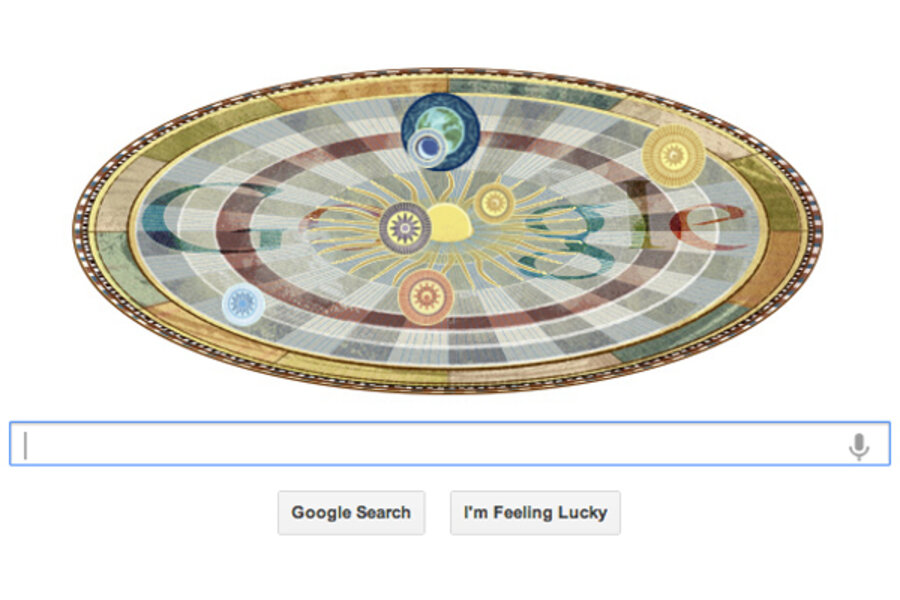Copernicus and the Church: What the history books don't say
Legend has it that Nicolaus Copernicus and the church were at odds over his development of the heliocentric theory, a principle that disputed the widely held belief that Earth was the center of the universe.
Unlike Galileo and other controversial astronomers, however, Copernicus had a good relationship with the Catholic Church. It may come as a surprise, considering the Church banned Copernicus' "Des revolutionibus" for more than 200 years. Copernicus was actually respected as a canon and regarded as a renowned astronomer. Contrary to popular belief, the Church accepted Copernicus' heliocentric theory before a wave of Protestant opposition led the Church to ban Copernican views in the 17th century.
Throughout his lifetime, Copernicus was active in the religious community. Copernicus was born in 1473 in Torun, Poland, the youngest of four children. At age 10, his father died and he were sent to live with his uncle Lucas Watzenrode, who would later become the bishop of Warmia (Ermland).
Copernicus studied at St. John’s Church in Torun's parochial school before going to Krakow Academy in 1491 to pursue astronomy and astrology. He became known as a skilled mathematical and astronomer, but he also maintained his ties to the church. He became a canon of the cathedral chapter of Frombork through his uncle, and he served the church of Warmia as a medical advisor.
Copernicus first outlined his ideas about the heliocentric theory in a manuscript titled “Commentariolus.” There he suggested a heliostatic system, where the sun was at the center of the universe and the earth made rotations.
The astronomer published “De revolutionibus” in March 1543, after more than a decade of revisions. The book included a letter to Pope Paul III arguing the legitimacy of the heliocentric theory. He died two months later.
“De revolutionibus” initially met no resistance from the Catholic Church. It was not until 1616 that the church banned the book. The ban continued until 1835.
Mano Singham, an associate professor of physics at Case Western University in Cleveland, Ohio, points out discrepancies between popular narratives about Copernicus and the full story.
Singham published an article in Physics Today in December 2007 disputing the assumptions that Copernicus’ ideas were “fiercely opposed by the Catholic Church.” The article, “The Copernican myths,” debunks many assumptions: that people regarded Earth as the center of the universe with pride, that Earth was believed to be the center of the universe rather than at the center, that the Catholic Church immediately rejected Copernicus’ findings.
Copernicus’ heliocentric model did receive some criticism from colleagues, but it was in part due to people’s understanding of direction and of Earth's mass in relation to the universe, Singham writes. “De revolutionibus” was read and at least partially taught at several Catholic universities.
One possible reason for the misconceptions about Copernicus is the execution of Giordano Bruno, a philosopher who was known as a heretic and an advocate of Copernican theory. While he was condemned for other reasons, Bruno became known as “the first martyr of the new science” after he was burned at the stake in 1600.
However, the article also notes that Copernicus gained ridicule from poets and Protestants, who condemned it as heresy. While the Catholic Church initially accepted heliocentricity, Catholics eventually joined the wave of Protestant opposition and banned the book in 1616. The Protestant churches accepted Copernicus’ findings after more evidence emerged to support it. The Catholic Church, however, remained ground in its anti-Copernican beliefs until the 19th century. The ban on Copernicus's views was lifted in 1822, and the ban on his book until 1835.
It is worth noting, as Stanford University does, that the Catholic Church had no official stance on Copernican teachings. Pope Clement VII, who died about a decade before Copernicus, was said to have been receptive about the astronomer’s theories. While there was no recorded response from Pope Paul III, one of his advisors intended to condemn the book before dying.
Phil Lawler, editor of Catholic World News, also says Copernicus was in good standing with the Church when he died. He notes that while heliocentric theory was controversial during Copernicus’ lifetime his work did not cause him any conflict with the Catholic Church.
"Yes, he delayed because he feared an adverse reaction — not from Church leaders, but from his fellow scholars. There is absolutely no evidence to suggest that Copernicus was worried about a hostile reaction from the Church.”
Despite the resistance to Copernican views in the future, the astronomer’s life was one immersed in religion. And while it may be forgotten, it is under the auspices of the Catholic Church that Copernicus made his theories known.








